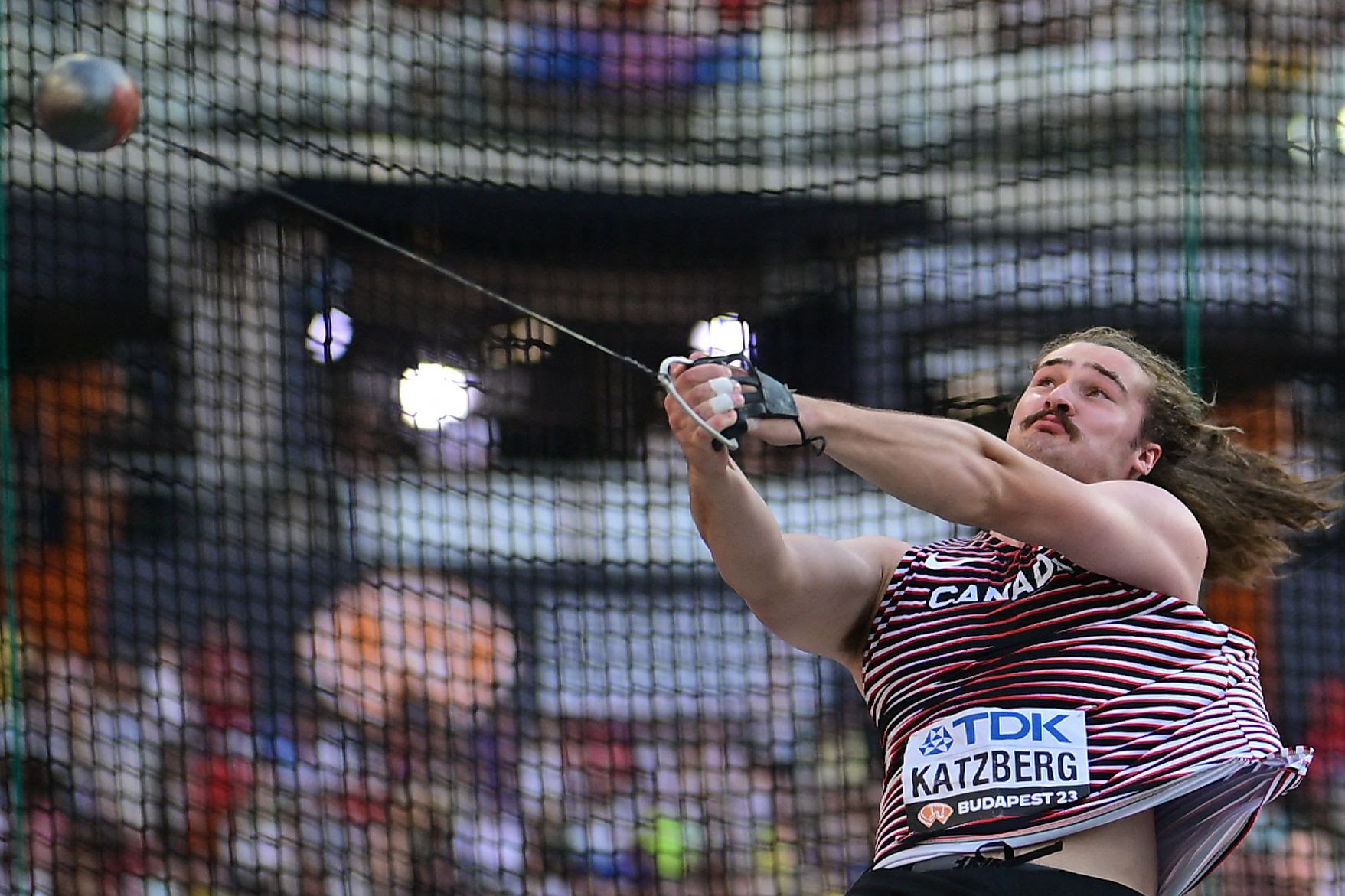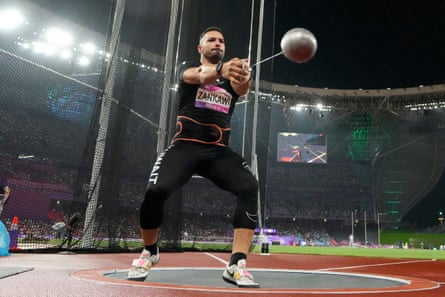Sometimes a writer has to create a title to draw readers into his/her lair. I'm thinking of Jules Verne's titanic book of baseball history, "Twenty Thousand Leagues Under the Sea" for example. And wasn't it Sigmund Freud who wrote "A Midsummer Night's Dream"? For a few other suggestions go to end of this post. Apologies Paul, it was late and I was tripping. George
How Coach Helped His Runner Get Off the Starting Line
By Putting a Knife To Her Throat
By Paul O’Shea (Marquette U.)
You know the old adage: those who can’t play a sport, coach.
As a runner, sports journalist, administrator and meet official, I’ve
watched thousands of youngsters chase each other over grass, track and trail.
One lovely September afternoon years ago, when I began coaching a high
school girls cross country team, I was confident I knew the rules.
My Oak Knoll Royals were gathered at the starting line for their first
race of the season in my first race as their coach.
As the runners moved up to the starting line I heard the meet director
shout: “No hats, no watches, no jewelry.”
Fine. Nothing my girls wore threatened their competitors, I thought.
But as the other teams began discarding some offending items, one of my
runners pointed anxiously to the tightly knotted cord around her neck.
“Like you, over there,” the meet official thundered.
He peered at my Lauren.
“What’s that on your neck? Get it off.”
Lauren, an otherwise law-abiding daughter from a fine family,
probably taking four AP courses, volunteering at the local Senior Center,
teaching English as a second language, and a boon companion to her dog,
had around her neck, a forbidden item, a waxed leather necklace.
In New Jersey, where politicians are notable for their notoriety, my
duplicitous fifteen-year-old will commit a felony by starting the cross
country race with that performance-enhancing device.
Panic cauterized Coach’s heart.
I rush to the starting line to remove the offending item, but my
fumbling fingers fail the challenge. Earlier, at home, Lauren decided she
would look even more chic if she trimmed the edges of the knot, improving
her model-like fuselage.
So, as the warm afternoon lingers, the novice coach attempts to loosen
the leather decoration. Now, he looks as if he himself had just journeyed five
thousand meters. He can’t get the bloody thing unknotted.
Looking on are 145 runners, their coaches, family members and
friends, transfixed.
“Anyone have a knife?”
After a few tense moments a Swiss Army knife is found.
Coach very, very carefully slips the blade between Lauren’s slippery,
pulsing neck and the proscribed jewelry. As the knife edges forward, the
athlete stands still as she wisely determines her life may depend on it.
Finally, standing watch, Lauren’s father applauds as I slice through the cord.
She’s ready to start, the gun fires.
A few minutes later we chase twenty teams of teenagers around the
course as Oak Knoll wins the Newark Academy Invitational with 41 points.
Lauren is one of our scoring top five, playing a key role in the victory.
Sadly, Lauren and Coach lost touch over the years. Thinking back to
her work ethic on and off the cross country course, I can well imagine that
today she is a tenured professor of law at Berkeley, summers in Montreaux,
and is long-listed for the Booker. And all because Coach was steady in a
pinch.
My entry into the coaching corps began after I retired.
That summer of ’97, I began to think I could have a new way to keep close
to the sport I treasured for decades. I knew Oak Knoll School in Summit,
New Jersey had once fielded track and cross country teams, but they fell
away as interest dwindled. I visited the school’s athletic director, and said I
would be interested in resurrecting the sport. Sure, he said, as long as you
can persuade seven girls to join up. We did better than that. We brought
fifteen girls and one rookie coach together.
One thing I learned from coaching a cross country team for the first
time is that you don’t have to master a handbook of obscure rules. The
sport’s pretty basic.
Your girls walk up to the starting line, you caution them not to start
before the gun sounds, and please make their way around without
threatening to sue the girl running next to them because she planted an
elbow in the ribs. The athlete who detours the course as if she were bee
lining to the last supermarket parking space, will not amuse the crusty folks
who manage the race. Running the full distance is not only sporting, it’s
preferred. Finally, cross the finish line, maintaining your poise, ideally
without crawling on all fours. Before the race, remind your team to relish
the personal fulfillment that comes from completing the task with honor.
Because the ability to perform well depends on accumulating
substantial physical and mental strength, much of the training involves
running miles. The coach’s art is mixing the right ingredients of mileage,
speed, repetitions and terrain.
Cross country scoring is simple. The first five on the team count, and
you add up their finishing places. Like golf, low score wins. A perfect score
in golf would be an improbable 18, a hole-in-one every tee shot. A perfect
cross country score is 15, which recognizes that your team’s scoring five
finished in the first five positions. That achievement happens infrequently,
but once Oak Knoll was perfect in one dual meet against a traditional rival.
There were any number of sad, funny, tense and elegiac moments
during my coaching career.
I remember the day when one of my backbenchers—the lesser
performing lasses-- was running along in a race at Newark’s Warinanco
Park. A girl from another team passed her, gave her an elbow. My harrier
decided she’d had enough, stopped running, and cried. No coach’s rulebook
prepares you for this.
To underscore the limited power of the coach over his independent
charges, one of my runners was advised before starting her warm up, to lasso
that unencumbered shoelace so a mishap might be avoided. Megan
sincerely believed she’d get to it in due course, or was she remembering the
time she and her teammates played strip poker with a group of boy runners
at a summer running camp? Her mind on other things, perhaps, this race day
she turned an ankle in her warm-up and was listed on the results sheet as
DNS. Did-Not-Start. Later that season she paid closer attention to her
Nikes, and broke the finishing tape as conference champion.
One of our goals was for Oak Knoll to qualify for the Meet of
Champions in November at Holmdel Park, the Carnegie Hall of the state
cross country landscape. That would have placed us among the top twenty
or so teams in New Jersey, but we were never able to qualify. I did have
several individual runners who were outstanding: one qualified for the Meet
of Champions as a freshman.
They, in turn, mostly felt that cross-country would be an entry on their
high school resume. They were well away from those athletes who wanted
to establish themselves through the sport, or even earn a college scholarship
from running.
The school’s better athletes went out for soccer in the fall. We made
do with some dozen girls each year including a couple of “transfers” from
soccer and field hockey when they were downsized. But no one gets booted
off a cross-country team, even if we had to wait until dark for a girl to finish
a workout.
Cross country is a sport with great returns for those who train and
compete. You get rewarded based on your own contribution, and the team
gets rewarded as well. You don’t worry if the coach will put you in the
game, there’s no bench in cross country, everybody’s on team. You don’t
need to be fast, just committed. The honors and medals go to the strong, the
resolute. A good coach can help you get to your own finish line, a winner.
The sport began formally in England in the early nineteen hundreds
and is well titled. Runners traverse the land, usually on grass, or trails, in
parks or campuses. Often with hills to provide additional tests. I loved
coaching cross country.
Most of us enjoy the movies, and if you happen to like classic films as
I do, perhaps you remember what I think of as the best ballet movie of all
time, The Red Shoes.
In that film there’s a very romantic scene with a young couple in the
back of a horse-drawn carriage on the shores of the French Riviera. The
moon sparkles on the water, the carriage moves slowly along the road, their
heads become one. He turns to her and whispers: Will we ever be as happy
as this again in our lives?
Flash forward to a real life transportation scene in the late 1990s.
A school van maintains pace with traffic on New Jersey’s Garden
State Parkway. In the back a dozen Oak Knoll girls are singing Madonna’s
Like a Prayer, at the top of their lungs.
Not the school’s alma mater, to be sure, but the team’s theme song.
Holy Madonna, they’re on their way to a cross country meet.
They’re fifteen, sixteen, seventeen years old, intelligent, pretty and fit.
Will they ever be as happy as this again in their lives?
Of course they will. They’re young women of promise, on their way
to spectacular achievement.
September, 2020
1. "I Can Run With My Eyes Shut" by Dr. Seuss or was it "Read With My Eyes Shut"?
1. "Sadomasochism for Accountants" by Rosy Barnes could easily have been written for Runners.
3. "The Rape of the Lock" Alexander Pope I never understood this title and Miss Hagan my soph English teacher would not let me read it.
4. "Unbearable Lightness of Being" by Milan Kundera A perfect title for a book on running.
5. "Your Feet Are Killing You" by Dr. Simon Wikler (1912) a man ahead of his time.
6. "Theory of Lengthwise Rolling" by Nikitin, Tselikov, and Rokotyan. Supposedly Vladmir Kuts was into this.










